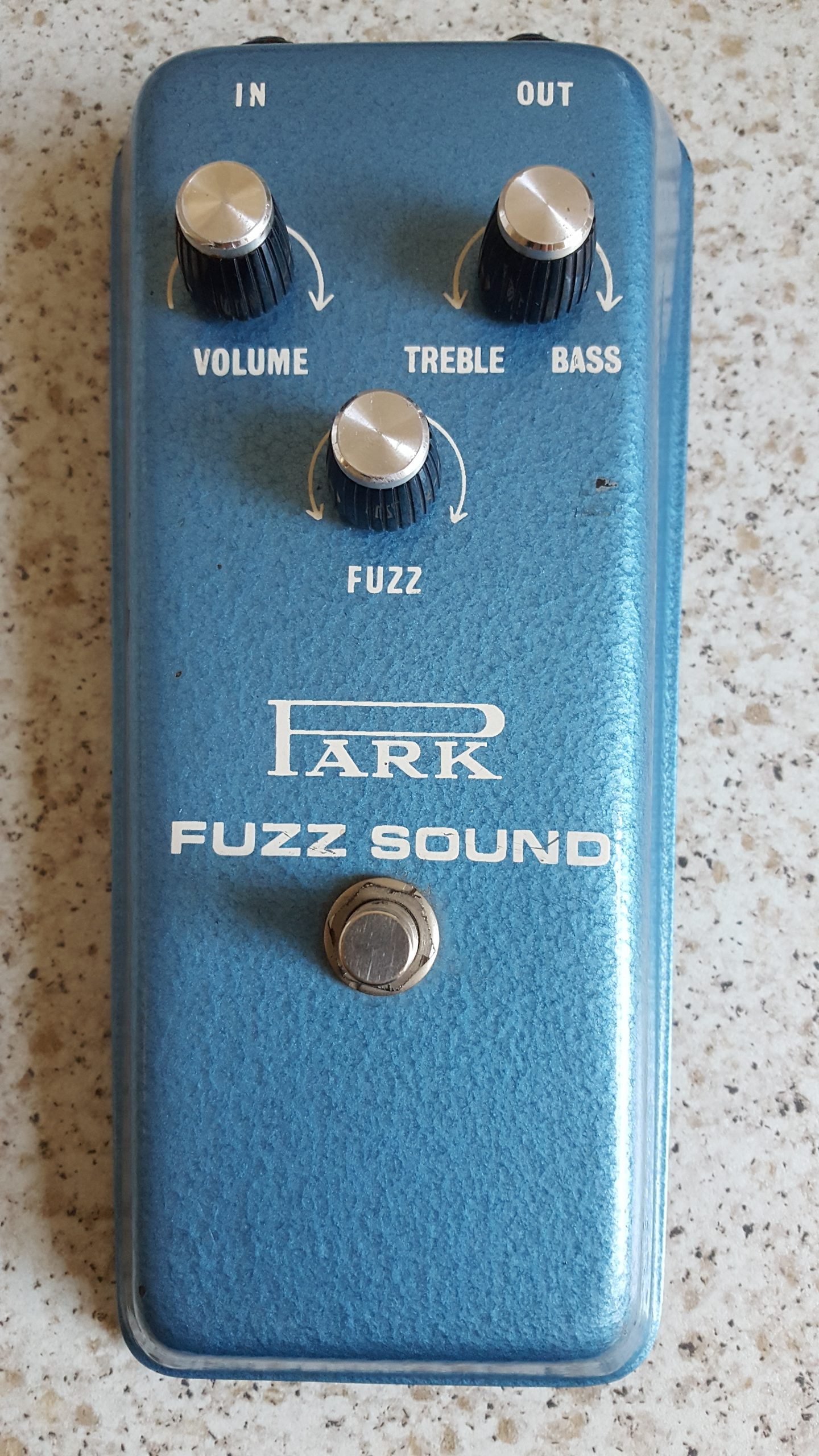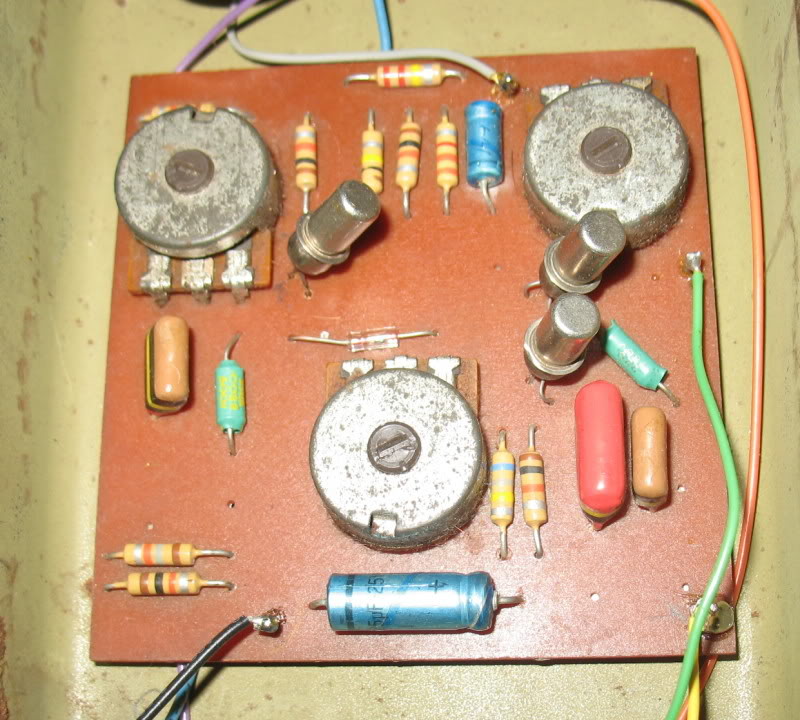Overview
‘Park’ was a brand that was launched by Marshall during the mid-1960s, and along with a range of amplifiers, Park also sold its own fuzz box. In the same way that Marshall was initially supplied with fuzz boxes by Sola Sound, the Park Fuzz Sound was also a rebranded Sola Sound product.
The known surviving Fuzz Sounds were built during a period spanning approximately from the late 1960s until the mid-1970s. These pedals featured the same type of enclosures that Sola Sound were already using for pedals like the Vox Tone Bender MKIII, and later, the Sola Sound Tone Bender MKIV. This version of the Park Fuzz Sound also featured identical electronics to the other fuzz boxes that Sola Sound was building at the time, with a circuit topology that was originally used in the Baldwin-Burns Buzzaround.
The exact year that the Park Fuzz Sound was first released is currently unknown. Gary Hurst recalled his own designs having been rebranded for a number of companies, which included Park,1 and so it remains a distinct possibility that earlier versions of the Park Fuzz Sound were built prior to the extant pedals with the ‘MKIII’ circuit.
Park Fuzz Sound ‘MKIII’, c. late 1960s



During the late 1960s, Park Fuzz Sound pedals came with Tone Bender MKIII circuits, housed in ‘MKIII’-type enclosures. Unlike the version of the MKIII that Sola Sound was supplying to Vox and Rotosound, the very earliest of these ‘MKIII’ Fuzz Sounds were fitted with only two control knobs. The basic circuit & construction of these pedals was identical to the Tone Bender MKIII, but the amount of ‘fuzz’ was fixed at maximum, and the remaining two controls varied the volume & tone of the effect. Confusingly, the tone control on these two-knob Park Fuzz Sounds, with MKIII circuits, was misprinted as ‘fuzz’. (Photo credit: J. Roth/Jermsfuzz)
Park Fuzz Sound ‘MKIII’, c. late 1960s/early 1970s



Other examples of the ‘MKIII’ Park Fuzz Sound, dating approximately to the late 1960s/early 1970s, were built with the more conventional three-knob arrangement. These pedals were identical to the three-knob Tone Benders that Sola Sound was also manufacturing for companies like Vox & Rotosound at the same time. (Photo credit: Root Two Amplification)
Park Fuzz Sound ‘MKIV’, c. early-to-mid-1970s



By the early 1970s, the Park Fuzz Sound was being manufactured in the same type of pressed steel enclosure that Sola Sound was using for their Tone Bender MKIV. Date codes in surviving pedals confirm that the Park Fuzz Sound would continue to be built like this until the mid-1970s. (Photo credit: S. Castledine)
Mike Oldfield was photographed (below) using several Park Fuzz Sound pedals of this sort, and the model can also be seen & heard on Oldfield’s 1973 BBC performance of ‘Tubular Bells.’
Share your fuzz!
I welcome any comments, feedback, queries & corrections in relation to the Fuzzboxes.org project. Please get in touch via this contact form (or on the ‘contact‘ page).
Much of our understanding of the development of 1960s fuzz boxes comes from analysis of surviving pedals themselves, and so photos of pedals belonging to readers are particularly useful in furthering this research.
If you would like to contribute pictures of 1960s-era guitar effects to Fuzzboxes.org, then feel free to send in any pictures via the uploader below. Photos are greatly appreciated, and any submissions are not published on this website without advance agreement with the contributor.

I saw a photo of the two-knob Park on Effects Database and wondered what circuit was inside. It bothered me for a few days then I remembered this site! Thanks for sharing all your fuzz knowledge.
What transistors are those?
Good question! Unfortunately, the transistors we typically see in these MKIII (and MKIV) Tone Benders, including those pictured on this page, are almost always unmarked. They were probably a British type, made by STC, but their exact specifications will likely never be known.